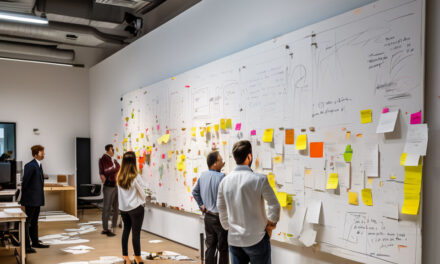While remote working remains a core part of the modern employment landscape, a shift is emerging as Gen Z enters the workforce. The youngest working generation is showing increased interest in returning to physical office spaces—not simply for productivity, but for structure, connection and cultural identity.
A recent feature in The Guardian highlighted the re-emergence of office “uniforms”, driven by younger professionals. These outfits, styled with a nod to tradition, signal more than fashion preferences. They reflect a growing appetite for daily routine, clear boundaries between work and life and real-world interaction—factors that the remote model can struggle to provide.
Aman Parmar, Head of Marketing at Bizspace, a provider of flexible workspaces for SMEs, commented on the trend, saying, “Gen Z is often viewed as the most tech-forward generation, but we’re seeing increasing interest from younger professionals in face-to-face collaboration, mentorship and routine. Many missed out on early career experiences due to the pandemic, and now want to make up for that by being present – literally – in the workplace.”
Generational Differences Shaping New Office Norms
With the retirement of the youngest baby boomers on the horizon, the majority of the UK workforce is now composed of Gen X, Millennials and Gen Z. Each group brings different expectations to the workplace. Generation X tends to value practicality and independence, Millennials often favour creativity and hybrid flexibility, while Gen Z is both digital-native and increasingly focused on in-person development.
Parmar said, “As the strongest advocates of tech, you might expect Gen Z to be the strongest proponents of remote working, but actually, more and more Gen Z employees are reporting a desire for face-to-face contact with colleagues. Many members of Gen Z report feeling that the Covid pandemic hindered their opportunities to develop key workplace skills, and are seeking opportunities to develop them further through time in the office.”
This interest in structured office fashion is part of a wider trend. For many younger workers, dressing for the office provides a psychological boundary between personal and professional life, and a sense of identity within the team. The return of “uniforms” is, in this sense, a visual expression of a deeper need for routine, engagement and belonging.
Hybrid Working: A Model for Cross-Generational Collaboration
As the working world adapts to new expectations, hybrid work continues to offer a viable model. It balances the flexibility many employees demand with opportunities for in-person collaboration that are especially valued by Gen Z.
Parmar noted, “The popularity of flexible working with employees shows no sign of dropping, and remote work looks set to remain a key part of our working landscape. However, it is important that businesses do not lose sight of how significant in-person collaboration can be. Deployed well, facetime with colleagues can lead to significantly enhanced productivity and innovation.”
Face-to-face interaction improves communication by reducing misunderstandings and supporting clearer conversations through body language and tone. For younger professionals still adjusting to workplace norms, these interactions are also essential for learning workplace etiquette and problem-solving techniques.
In physical office settings, mentorship becomes more accessible. Gen Z employees can benefit from spontaneous questions, shadowing and immediate feedback, all of which support faster professional development. Many younger workers report that remote models limited their exposure to this kind of learning, making in-person mentorship increasingly valuable.
Office-based work also promotes stronger interpersonal relationships. Informal conversations during breaks, meetings or team lunches contribute to improved morale and teamwork. These casual exchanges enhance collaboration across generations, creating a more cohesive and responsive working environment.
Engagement levels also benefit. Physical offices provide structured spaces for creative sessions, collaborative workshops and team discussions. These elements foster a stronger sense of connection to company culture and shared goals, increasing motivation among younger staff.
Reinforcing Innovation Through Intergenerational Interaction
Bringing different generations together in a shared physical space also supports innovation. Gen Z’s digital-first mindset complements the strategic experience of older colleagues, resulting in more dynamic and adaptable teams. In-person collaboration facilitates real-time brainstorming and faster iteration, allowing companies to develop solutions that are both creative and commercially viable.
This convergence of skills highlights the broader value of office presence. For Gen Z, the workplace represents more than a site of employment—it is a community, a learning space and a stage for professional growth.
The resurgence of formal officewear among younger professionals illustrates this desire for identity, structure and shared experience. As organisations continue to develop future-facing work strategies, recognising and responding to these evolving generational needs will be central to fostering inclusive and productive teams.






